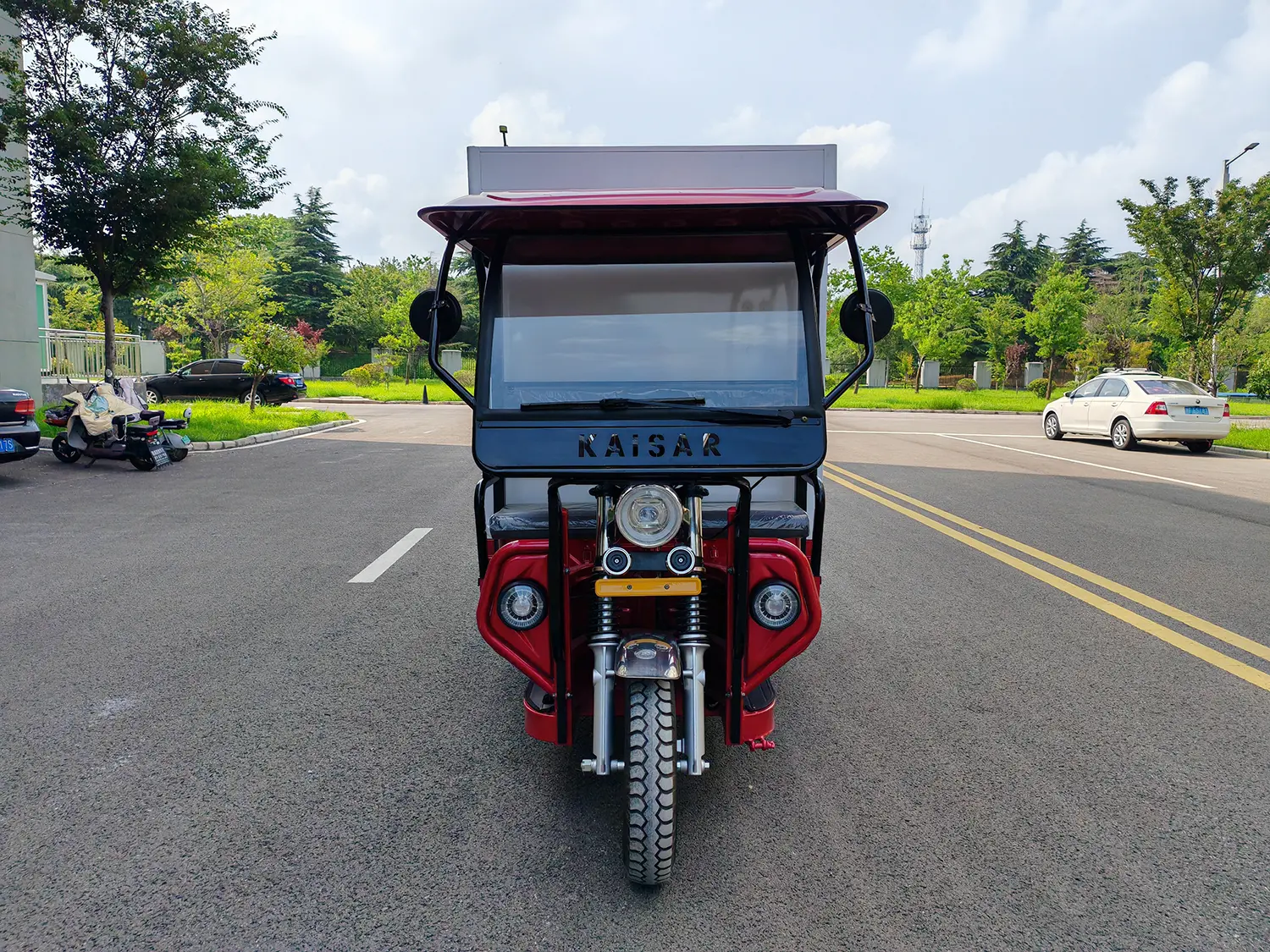Navigating the rules of the road can be tricky, especially when it comes to unique vehicles like three-wheeled trikes. You might be wondering, "Do I need to wear a helmet? What kind of licence is required?" This article is your clear, straightforward guide to understanding the UK’s laws on riding a trike. Whether you’re a business owner considering a fleet of cargo trikes or an individual excited about hitting the road on three wheels, we’ll break down everything you need to know about helmets, licences, and safety. Let’s make sure you’re riding legally and safely.
What Exactly is a Trike in the Eyes of UK Law?
First things first, let’s define what we’re talking about. In the UK, a trike is legally classified as a three-wheeled motor vehicle. It’s not quite a motorcycle, and it’s not a car. The government has specific categories for them. A trike must have three wheels symmetrically arranged. This means one wheel at the front and two at the back, or two at the front and one at the back. It’s that simple.

This distinction is important because the rules that apply to a two-wheeled motorcycle or a four-wheeled car don’t always apply to a trike. As a manufacturer, I often speak with business owners like Mark Thompson from the USA. He’s looking to build a delivery fleet and needs to know precisely how his vehicles will be classified. Understanding that a trike is its own category is the first step in understanding the specific regulations for licensing and safety gear, like helmets. The official definition helps clear up a lot of confusion from the start.
The key takeaway is that a trike is a unique motor vehicle with its own set of rules. It’s not just a motorcycle with an extra wheel. The law treats it differently, which affects everything from the licence you need to whether you must wear a helmet.
Do You Need to Wear a Helmet on a Trike in the UK?
This is the big question everyone asks! The simple answer is: yes, in most cases, you need to wear a helmet when riding a trike in the UK. The law is very clear on this. The same regulations that require motorcyclists to wear protective headgear generally apply to trike riders. The primary goal of this helmet law is to protect the rider from serious head injuries in an accident.
For anyone planning to operate a trike, whether it’s for personal use or for a business, you should assume a helmet is mandatory. Think of it just like riding a motorcycle; the risks are similar, and so are the protections required by law. If you are the rider or a passenger on a trike, you must wear a safety helmet that meets British safety standards.
There is, however, a bit of nuance to this rule, which we will explore next. But for the vast majority of riders, the rule is simple and strict. If you are on a trike on a public road, you need to wear a helmet. Failing to do so can result in fines and points on your licence. Safety is paramount, and the law reflects that.
Is the Helmet Law Compulsory for All Trike Riders?
While the general rule is that you must wear a helmet, there are a few specific exceptions. It’s important to know that these exceptions are rare and apply to very specific situations. Contrary to popular belief, it’s not a free-for-all. The Department for Transport has outlined these cases clearly.
The most significant exception involves trikes that are enclosed, like a car. If the trike has a cabin that fully encloses the driver and passenger, and it is fitted with seat belts, then helmets are only compulsory if the vehicle manufacturer specifies it. Think of it this way: if the motor vehicle provides car-like protection, the law may not require the additional protection of a helmet. This is because the vehicle’s structure itself is designed to absorb impact and protect the occupants.
Another exception, though less common now, is for followers of the Sikh religion who wear a turban. This is a long-standing exemption in UK traffic law for open-air vehicles like a motorcycle or trike. Additionally, there can be specific exemptions for medical reasons, but this requires official documentation from a doctor. For nearly everyone else, the rule stands: the helmet is compulsory in the UK.
What are the Different Types of Trikes and Do Rules Vary?
Trikes come in all shapes and sizes, designed for different purposes. Understanding the different types of trike can help you understand why the rules are what they are. Broadly, they can be grouped into a few categories:
- Passenger Trikes: These are designed to carry people, much like a taxi or a family scooter. They often have comfortable seating in the back for one or two passengers. Our Electric passenger tricycle (African Eagle K05) is a perfect example, built for comfort and safety in passenger transport.
- Cargo Trikes: Built for work, these trikes have a cargo bed or box. They are a fantastic, eco-friendly solution for last-mile deliveries, small businesses, and municipal services. A dependable Electric cargo tricycle HJ20 can carry significant weight, making it a powerful tool for logistics.
- Leisure Trikes: These are often custom-built or based on large motorcycle frames, designed for touring and recreational riding. They prioritize power and comfort for the rider.
The fundamental rules about wearing a helmet and licensing apply across all these types if they are open-air vehicles. However, the design can impact other factors. For example, a heavy-duty cargo trike might have different braking and suspension systems than a light passenger trike. When we manufacture our trikes, we focus on high-quality components for the frame, motor, and battery, ensuring that no matter the type, the trike is durable and safe for its intended purpose.

What Licence Do You Need to Ride a Trike?
This is where things got a bit more complex after 2013. The type of licence you need to ride a trike in the UK depends on your age and when you passed your driving test. It’s no longer a simple case of just having a car licence.
Here is a simple breakdown of the current licensing requirements:
| Your Situation | Licence Required to Ride a Trike |
|---|---|
| You passed your car test before January 19, 2013 | You can ride a trike of any power rating. Your existing full car licence (category B) gives you this right. |
| You passed your car test on or after Jan 19, 2013 | You’ll need a full category A1 or a full category A motorcycle licence. You can’t just jump on a trike with your standard car licence. You will have to pass a motorcycle test. |
| You have a physical disability | Special provisions apply. You may be able to take a test on a trike, which will then restrict your licence to trikes only. You’ll need to get the right provisional entitlement first. |
| You already hold a full motorcycle licence (A) | You are fully entitled to ride a trike of any size or power. Your full motorcycle licence covers it. |
I often explain this to my clients, like Mark. If he’s hiring drivers in the UK, he needs to check their licences carefully. A driver who got their car licence in 2015 can’t legally operate a trike for his delivery business without passing an appropriate motorcycle test. This is a critical point for ensuring a business operates legally.
How Did the Trike Licence Rules Change in 2013?
The big shake-up happened on 19th January 2013. This was when the UK implemented the 3rd European Driving Licence Directive. This new legislation came into effect which allows for more harmonized rules across Europe, but it significantly changed things for trike riders in the UK.
Before this date, anyone with a full category B (car) licence could ride a trike of any power. It was simple. However, the government and the EU decided that since trikes handle more like a motorcycle than a car, riders should have specific training. As of January 2013, new drivers could no longer rely on their car test to qualify them to ride a trike.
So, if your licence was issued prior to January 19, 2013, your old rights were protected. You can still ride a trike on your car licence. But for everyone who passed their car test after that date, new rules apply. You’ll now need to get a motorcycle licence to ride a trike, unless you are a rider with a disability. This change was all about improving road safety by ensuring riders have the skills to handle these unique vehicles.

Can I Ride a Trike on My Car Licence?
Let’s spell this out as clearly as possible because it’s the most common question. The answer is: it depends entirely on when you passed your car test.
-
YES, if you passed your car driving test before 19 January 2013.
Your licence prior to this date automatically includes entitlement to ride a three-wheeled motor vehicle. You do not need to take any extra tests. You are legally allowed to ride any trike, regardless of its engine size or power output. -
NO, if you passed your car driving test on or after 19 January 2013.
If you fall into this group and you’re not physically disabled, a standard car licence (category B) is not enough. You must get a motorcycle licence to legally ride a trike. This means you need to apply for a provisional motorcycle licence, complete the Compulsory Basic Training (CBT), pass the motorcycle theory test, and finally pass a practical test on either a two-wheeled motorcycle or a trike. If you hold a full motorcycle licence, you will by default be able to ride a trike.
This is a crucial detail. Many people assume their car licence covers them, but for newer drivers, that is a costly and illegal mistake to make. Always check the issue date on your photocard licence.
What if You Are a Disabled Rider? Are the Rules Different?
Yes, the UK driving laws have specific provisions to help people with disabilities enjoy the freedom of riding a trike. The system recognizes that a trike can be a fantastic and stable mode of transport for those who may not be able to balance a traditional motorcycle.
If you are physically disabled and want to ride a trike, you can take a combined theory and practical test specifically on a trike. To do this, you first need to get the right provisional entitlement added to your licence. If you pass your test on a trike, your licence will be restricted to "trikes only." This means you won’t be able to ride motorcycles with two wheels, but it provides a clear path to getting on the road.
An applicant who is a disabled person taking a test on a specially adapted trike must be a person over the age of 21 who holds a full category B (car) licence. The rules are designed to be inclusive, ensuring that irrespective of disabilities, there is a way to get legally licensed. This is one area where the process is also slightly adapted to suit trikes, recognizing their value as accessible vehicles.
What Kind of Helmet is Required for Riding a Trike?
If you are required to wear a helmet (which most riders are), you can’t just use any old one. The helmet must meet specific UK safety standards. Using a non-compliant helmet is illegal and, more importantly, unsafe.
In the UK, the helmet must meet one of the following standards:
- British Standard BS 6658:1985 and carry the BSI Kitemark.
- UNECE Regulation 22.05. This is a European standard, and helmets will have a label with a capital "E" in a circle, followed by a number representing the country that approved it.
- A standard from a European Economic Area member country that offers at least the same safety and protection as BS 6658:1985.
When you’re buying a helmet, look for a sticker inside or on the back that clearly shows one of these certification marks. It’s your guarantee that the helmet has been properly tested and is fit for purpose. A good quality helmet is one of the most important investments you can make for your safety when riding a motorcycle or a trike. Don’t cut corners on this piece of gear.
Why Choosing a High-Quality Trike Matters for Safety and Compliance
Understanding the law is just one part of the equation. The other is ensuring the trike itself is safe, reliable, and built to last. As a factory specializing in electric tricycles, I can tell you that build quality makes a world of difference. For a business owner like Mark, reliability isn’t a luxury; it’s essential for operations.
A well-built trike features:
- Durable Construction: A strong frame made from high-quality steel, with robust welds, can handle heavy loads and rough roads without failing.
- Reliable Power: Whether it’s a powerful electric motor or a traditional engine, it needs to be dependable. Our versatile van-type logistics electric tricycle uses a top-brand permanent magnet synchronous motor for efficiency and long life.
- Effective Brakes: Trikes are heavier than a bike and need strong brakes. Look for hydraulic disc brakes and a reliable parking brake.
- Stable Suspension: A multi-vibration damping system, like those found on the best chinese 125cc motorcycles, absorbs bumps and provides a smooth, controlled ride, which is crucial when carrying cargo or passengers.
Choosing a quality trike from a reputable manufacturer ensures you are compliant with vehicle standards and provides peace of mind. It means your vehicle is less likely to have mechanical issues, keeping your riders safe and your business running smoothly. It’s an investment in safety, durability, and efficiency.
Key Takeaways to Remember
Here’s a quick summary of the most important points about UK trike laws:
- Helmet Required: In almost all cases, you and your passengers must wear a UK-standard approved safety helmet when riding a trike.
- Licence is Key: The licence you need depends on when you passed your car test. If it was before January 19, 2013, your car licence is sufficient. If it was on or after that date, you need to wear an appropriate motorcycle licence.
- Rules for All: The helmet law and licensing rules apply whether you’re riding a passenger trike, a cargo trike, or a leisure trike.
- Disabled Riders: There is a specific, accessible path for disabled riders to get a trike-only licence.
- Quality Matters: A high-quality, well-made trike is not just about performance; it’s a fundamental part of staying safe and compliant on the road.
Post time: 07-16-2025




